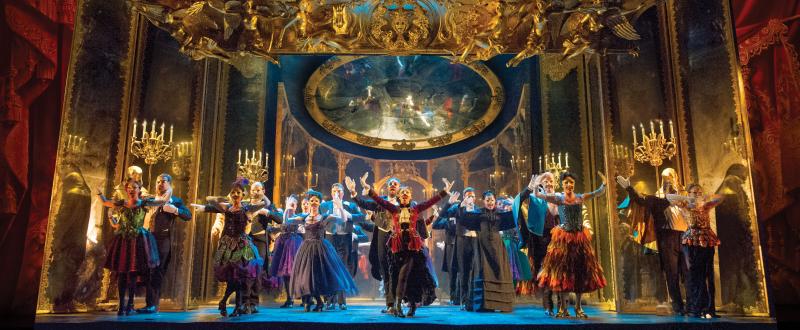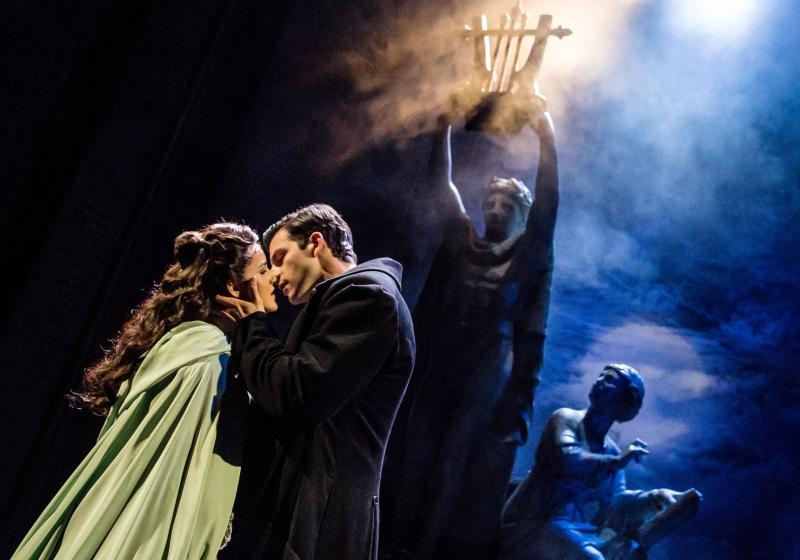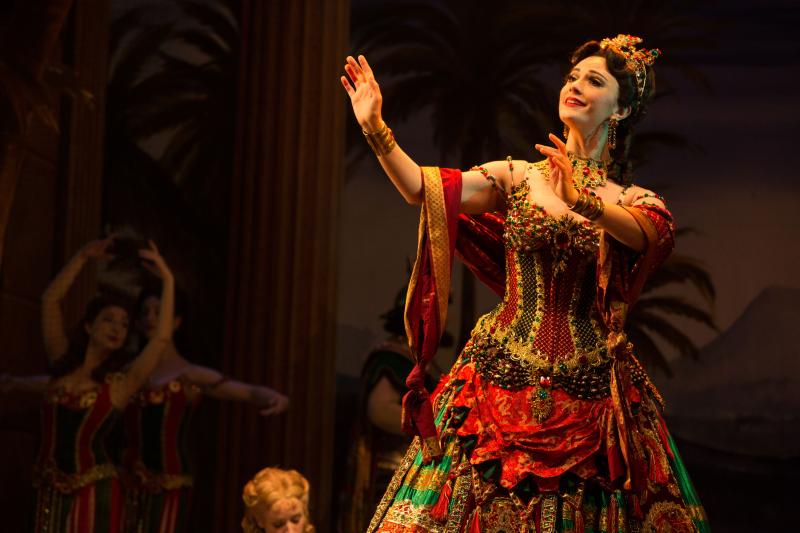BWW Preview: The Touring Production of THE PHANTOM OF THE OPERA is 'Worth the Schlep' from the Coachella Valley and Inland Empire

the Phantom and Christine.
Occasionally, Broadway World's Palm Springs page publishes reviews of productions playing closer to Los Angeles or San Diego than local theatregoers would ordinarily venture. Informally titled "worth the schlep," these reviews have generally focused on THE PHANTOM OF THE OPERA (POTO), in various incarnations.
POTO's current national touring production is about to land in the Los Angeles area, possibly for the last time. It will play at the Hollywood Pantages Theater from June 6thto July 7th, and at the Segerstrom Center from July 10thto July 21st. The production is not a clone of the Broadway-West End version, although it uses most of the costumes. It is darker and grittier, which audiences who prefer the horror aspects to the love story will probably appreciate.

A previous touring Phantom, the fabulous Derrick Davis, whom I saw perform the part at the Smith Center in Las Vegas two years ago, has resumed the role. I may be viewing his performance through the lens of someone who got to meet Mr. Davis, and found out that he is a truly nice guy, but I see him as a kinder, gentler Phantom than some of the others who have played the Phantom on the tour. This apparently runs counter to the opinions of some who have spoken to associate director Seth Sklar-Heyn, who told me during Mr. Davis's previous stint with the tour that most people view Mr. Davis's Phantom as a cold, frightening individual.
Regardless of whether Mr. Davis's Phantom is deliberately cruel or merely uncaring, the production, as I alluded to earlier, is darker than the original, both literally and figuratively. The lighting is dim, making clear that the Phantom lives his life in a cold, depressing lair that cannot reasonably be deemed a home. As the lights come up for the final lair scene, we hear Christine scream, "No! No! No!" implying that she believes that the Phantom is about to rape her, whether or not that is the case, and at one point he throws her on the bed. The Phantom's actions are in stark contrast to the original version, where he can barely bring himself to touch Christine when she "chooses" him over Raoul.

The sets differ significantly from the originals, but they are equally stunning, although I do not agree with the decision to eliminate the grand staircase. The actual Paris Opera House has a staircase, featured in both the original Lon Chaney movie and the 2004 Andrew Lloyd Webber musical, starring Gerard Butler; it's hard to think of POTO without it. Nonetheless, designer Paul Brown manages to create a breathtaking "Masquerade" scene. The famous travellator, which functions as a giant seesaw to simulate descending into the fifth cellar, where the Phantom lives, is also gone, replaced by an extraordinary tower with steps that move in and out as the performers descend. The tower also doubles as the catwalks where the opera crew works. The tower's high tech operation and imaginative appearance make for an exciting title number.

The chandelier descends towards the audience at high speed and, at some performances, spews forth confetti and pieces of plastic to simulate flying glass. Even though it doesn't crash onto the stage, instead moving vertically and occasionally blinking ominously, it will undoubtedly terrify those seated nearby. I still scream, after having seen the tour five times. The change in the chandelier's operation - it is already raised at the beginning of the show - allows for a new scene at the beginning. Since the auction occurs in a flashback, this time with Raoul able to walk and Madame Giry in a wheelchair, the chandelier's opening position allows additional action on the stage instead of the audience's merely watching the chandelier rise. Raoul sees the opera house stage crew bustling back and forth in his mind as he thinks about the memories that the auction and his purchase of the music box have reawakened.
Although there are a few minor changes in the music, such as slightly different tempos and some lyrics that have been rewritten, these are unimportant - the music soars, and Mr. Davis's voice does it full justice, as does Eva Tavares's performance as Christine.

There is one tantalizing piece at the very end of the show that leaves people so intrigued that the performers apparently have a secrecy clause written into their contracts. (They are allowed to say that the trick is not done with a trap door). In the original version, the Phantom sits down in his chair, folds his cape around him, and disappears, leaving his mask for Meg to find. It's not hard to figure out that the chair is hollow. Here, however, the Phantom disappears from the middle of the room. I think I may finally have determined just how the trick is done, but I'm not certain.
Anyone who loves THE PHANTOM OF THE OPERA needs to see this production, both to enjoy the familiar and to explore the new. The point is not to compare the two, but to view an old friend from a different perspective. If you've never seen THE PHANTOM OF THE OPERA, what are you waiting for? It's been running in London for 33 years and in New York for 31. Here's your chance to immerse yourself in the music of the night a few hours' drive from home.
Photo Credit: Matthew Murphy; Alistair Muir
[NOTE: The writer has substituted photos of the current cast for the ones originally used in this story.]
Comments

Videos
